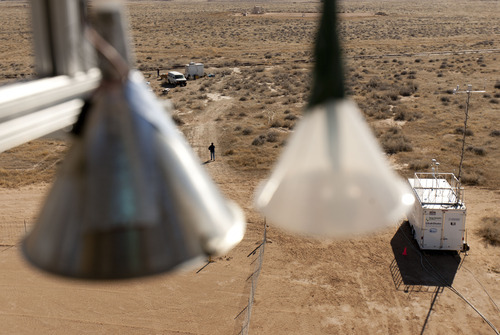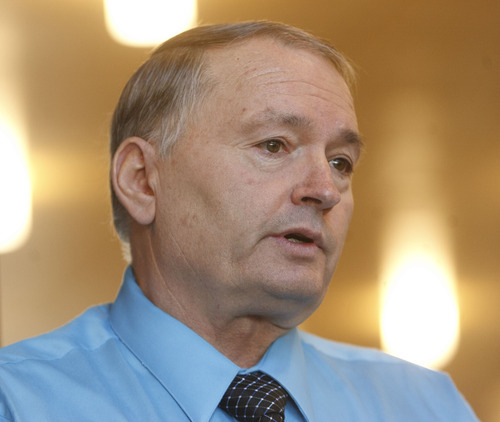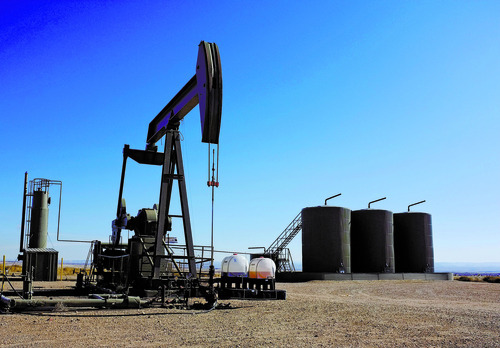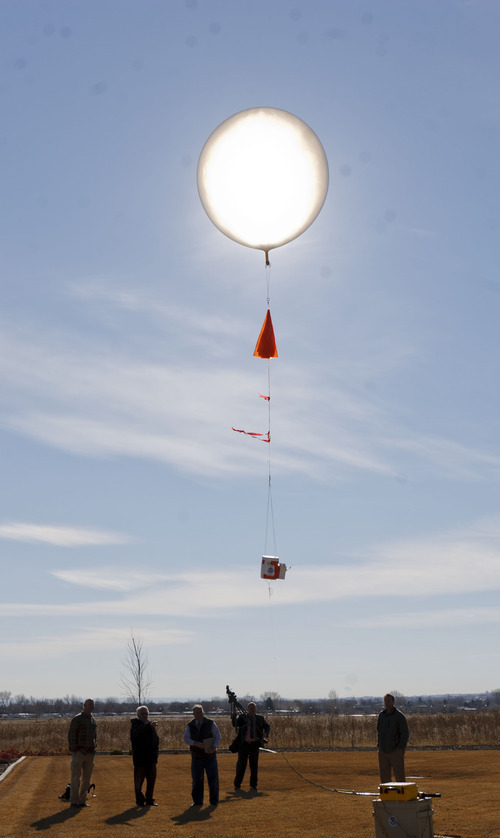This is an archived article that was published on sltrib.com in 2012, and information in the article may be outdated. It is provided only for personal research purposes and may not be reprinted.
Federal regulators are falling short on ozone pollution in the Uinta Basin, say environmental and health advocates who have taken their concerns to court.
The Utah Physicians for a Healthy Environment, the Southern Utah Wilderness Alliance and WildEarth Guardians say the U.S. Environmental Protection Agency has enough information to know pollution reaches unhealthy levels in the basin, which has logged some of the nation's highest ozone-pollution levels in recent years.
And, instead of delaying regulation until more data comes in, the agency should impose clean-air controls right away — especially from the oil and gas industry — the groups contend in papers filed in the U.S. District Court for the District of Columbia.
"All we're asking,"said Earthjustice staff attorney Robin Cooley, who is representing the groups in court, "is that the EPA recognize this air pollution problem and start to clean it up."
In a separate filing the groups also asked EPA Administrator Lisa Jackson to reconsider the agency's May decision not to regulate now. The groups want the focus to shift from economic issues to protecting community health.
Ozone has the biggest impact on the very young, the very old and people with heart and lung problems. It causes what's been described as a "sunburn on the lungs" and also harms otherwise healthy people.
It was once considered strictly a summertime problem in big cities. But winter pollution readings from the oil and gas fields of Wyoming and eastern Utah in the past seven years have shown the pollutants that create ozone— nitrogen oxides and volatile organic compounds — can also cause problems in snowy, rural areas.
Utah's Department of Environmental Quality has been leading an effort involving business, affected counties, the Ute tribe and EPA to study the problem in hopes of warding off unnecessary regulation. Last winter, the group mounted a $5 million study to tackle the scientific questions.
The advocacy groups said the EPA already has the information it needs from monitors that have been in operation since 2009.
Those monitors recorded 68 days in the winter of 2010 when ozone levels were higher than EPA's health-based standard of 75 parts per billion. They showed levels reaching nearly double the limits in 2011, as well as three-year average levels higher than those that prompted Wyoming to embrace federal regulation for the oil and gas fields of Sublette County.
The EPA told Utah Gov. Gary Herbert in December that it was considering a declaration that the basin counties were not in compliance with federal Clean Air Act limits on ozone, but the agency simply put the state on notice when readings last winter complied with the law.
Richard Mylott of the agency's Denver office said Monday that the EPA "is reviewing the filing and is actively working with all parties in the Uinta Basin to better understand and respond to ozone issues."
The Western Energy Alliance, a trade group representing oil and gas companies that contributed more than $1 million toward the effort, defended the EPA's handling of the issue and criticized the suit.
"They're asking the EPA to break the law," said Western Energy official Kathleen Sgamma. "The Clean Air Act is very clear" about the type of monitoring data required before clean-air controls can be ordered.
Brock LeBaron, deputy director of Utah Division of Air Quality, said that how the data is collected plays an important role in how it can be used. Besides, it's possible that if regulatory action forces those working on the problem to redirect their focus a solution might take longer.
"No one's sitting on their laurels waiting for that data to come in," he said. If there were to be a regulatory crackdown now, "you would expend a lot that is not dedicated to cleaning up the air."
Uintah County Commissioner Mike McKee called the lawsuit "frivolous" and noted that there were no excessively high ozone days last winter — the first winter that the EPA was properly equipped to use data from the basin.
"This is more about trying to tie up public lands and carbon fuels than it is about health," said McKee.
Meanwhile, Jeremy Nichols of WildEarth Guardians noted that EPA officials already have allowed other federal agencies to use the data to justify another 5,329 wells in the basin, in addition to the 10,000 wells already there. The new wells would add an estimated 7,010 tons more nitrogen oxides and 9,380 tons of volatile organic compounds, the groups' petition says.
"We can't sit on the sidelines and let these decisions go forward when, frankly, there's so much at stake," Nichols said.
Twitter: @judyfutah









